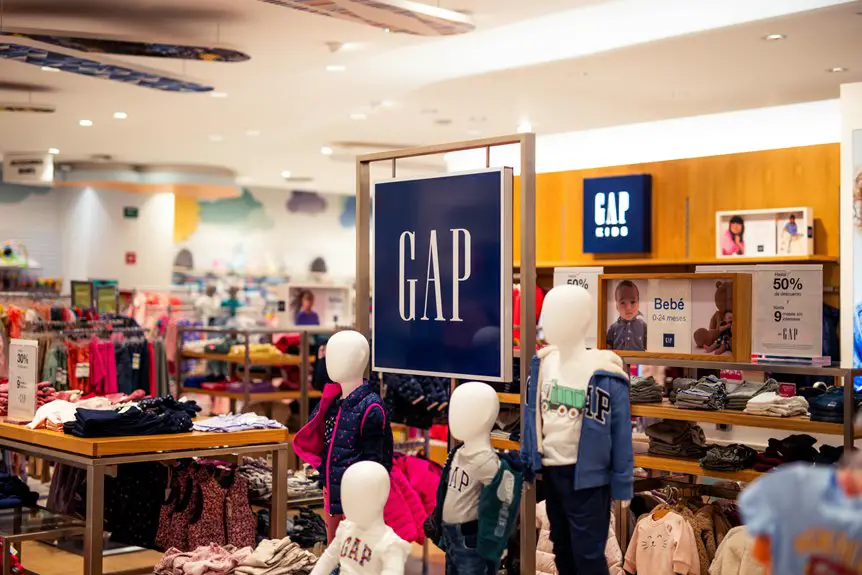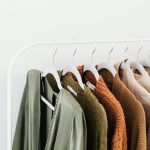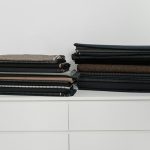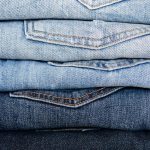You can buy tapestry fabric from specialty fabric stores that offer unique, high-quality, and handwoven options. Online marketplaces like Etsy and Amazon provide vast selections with customer reviews to guide you. Department stores and wholesale suppliers cater well if you need upholstery fabrics or bulk orders. For one-of-a-kind finds, check artisan boutiques or vintage shops. Sustainable and custom print services also offer tailored choices. Keep exploring to discover the best sources and tips for your perfect tapestry fabric.
Table of Contents
Key Takeaways
- Specialty fabric stores offer curated, high-quality tapestry fabrics with expert guidance and unique, traditional craftsmanship options.
- Online marketplaces like Etsy and Amazon provide vast selections, custom designs, customer reviews, and rare vintage tapestry fabrics.
- Department and wholesale suppliers stock diverse tapestry fabrics with bulk discounts and trusted brand options for quality and style.
- Sustainable and ethical fabric suppliers offer organic, Fair Trade certified, and recycled tapestry fabrics supporting eco-friendly and fair production.
- Vintage and antique shops provide unique, historic tapestry fabrics ideal for one-of-a-kind, sustainable textile repurposing projects.
Specialty Fabric Stores for Tapestry Materials
When you’re searching for high-quality tapestry fabric, specialty fabric stores offer a curated selection you won’t find at general retailers.
These stores focus on unique, durable, and richly textured materials ideal for your tapestry projects. You’ll find a variety of patterns, weights, and fiber blends tailored to different design needs.
Unique, durable, and richly textured tapestry fabrics in diverse patterns, weights, and fiber blends for every design need.
Staff at specialty stores often have expertise in tapestry fabrics, so they can guide you to the best options based on your project’s style and durability requirements.
Shopping in person allows you to feel the fabric’s texture and assess color accuracy firsthand. Plus, specialty stores frequently stock exclusive or limited-edition fabrics, giving your work a distinctive edge.
Visiting one guarantees you get premium tapestry materials that match your vision perfectly.
Popular Online Marketplaces With Tapestry Fabric Options
While specialty fabric stores offer hands-on experience and expert advice, online marketplaces bring convenience and a vast selection right to your fingertips.
Platforms like Etsy, eBay, and Amazon feature countless tapestry fabric options from various sellers, letting you compare prices, styles, and materials easily. You can filter results by color, pattern, or fabric weight to find exactly what you need.
Plus, customer reviews help you gauge quality before buying. Many sellers also provide detailed photos and measurements, so you know what to expect.
Shopping online means you can explore rare or vintage tapestry fabrics you mightn’t find locally. Just remember to check shipping policies and return options to guarantee a smooth purchase.
Online marketplaces make sourcing tapestry fabric quick and flexible for any project.
Department Stores Offering Quality Upholstery Fabrics
You’ll find popular department stores offer a wide variety of quality upholstery fabrics, including tapestry options.
Shopping in-store lets you feel the fabric’s texture and compare colors up close.
Plus, these stores often carry trusted brands that guarantee durability and style.
Popular Department Store Brands
Department stores have long been reliable sources for quality upholstery fabrics, including tapestry materials. When you shop at well-known department store brands, you’ll find a curated selection that balances style and durability. These stores often feature fabrics suitable for both beginners and experienced crafters, making your search easier.
Here’s a quick guide to some popular department store brands:
| Brand | Fabric Quality | Price Range |
|---|---|---|
| Macy’s | High-quality blends | Moderate |
| Nordstrom | Premium textiles | Higher-end |
| JCPenney | Durable options | Budget-friendly |
| Bloomingdale’s | Trendy, refined | Mid to high range |
You can count on these brands to offer tapestry fabrics that meet various upholstery needs.
Fabric Selection Variety
Although finding the perfect tapestry fabric can feel overwhelming, many department stores offer a wide variety of options to suit your project.
You’ll find diverse patterns, textures, and color palettes ranging from classic florals to modern geometric designs. These stores stock fabrics made from durable materials like cotton blends, jacquard, and chenille, ideal for upholstery.
Whether you want a bold statement piece or a subtle backdrop, you’ll find options that fit your style. Plus, many department stores categorize fabrics by weight and weave, helping you choose the right durability for furniture use.
With such a broad selection, you can easily compare fabrics side by side and pick the one that meets your aesthetic and functional needs.
In-Store Shopping Benefits
When shopping for tapestry fabric in-store, you benefit from seeing and feeling the material firsthand, which helps guarantee it meets your quality and texture expectations. Department stores offering quality upholstery fabrics give you the chance to compare colors, patterns, and weights under natural lighting. You can ask staff for expert advice and get immediate answers to your questions. Plus, you avoid shipping delays and can take your fabric home right away.
| Benefit | Why It Matters |
|---|---|
| Touch and Feel | Confirms fabric texture fits needs |
| True Colors | Accurate color matching |
| Expert Assistance | Personalized guidance |
| Immediate Purchase | No waiting for delivery |
| Visual Comparison | Easier to decide with side-by-side samples |
Artisan and Boutique Shops Featuring Handwoven Tapestry
If you’re seeking truly unique tapestry fabric, artisan and boutique shops offer handwoven pieces that stand out for their craftsmanship and character.
When you shop at these specialized stores, you’ll find fabrics dyed and woven by skilled artisans, often using traditional techniques passed down through generations. This means each tapestry has a distinct texture, pattern, and story you can’t get from mass-produced options.
Plus, supporting these shops helps preserve cultural artistry and small businesses. You can explore local boutiques or browse online artisan platforms that curate handwoven tapestries from around the world.
Supporting artisan shops preserves cultural artistry and small businesses while offering unique handwoven tapestries worldwide.
Keep in mind, these fabrics might be pricier but their quality and individuality make them worth it. If you want tapestry fabric with soul and authenticity, this is the place to look.
Wholesale Suppliers for Bulk Tapestry Fabric Purchases
Since you’re looking to buy tapestry fabric in large quantities, wholesale suppliers offer the best pricing and variety to meet your needs. They typically provide bulk discounts, allowing you to stretch your budget while accessing a wide range of patterns, textures, and colors.
Many wholesalers operate online, giving you the convenience of browsing extensive catalogs from your home or studio. You can also find suppliers specializing in different fabric weights and blends, perfect for specific projects.
When choosing a wholesale supplier, check their minimum order requirements, shipping policies, and customer reviews to guarantee reliability. By buying wholesale, you’ll not only save money but also secure a consistent supply of tapestry fabric, ideal for large-scale projects or retail purposes.
Eco-Friendly Sources for Sustainable Tapestry Textiles
If you want tapestry fabric that’s kind to the planet, look for organic materials and suppliers with fair trade certifications.
You’ll also find great options from companies using recycled fibers. Choosing these sources helps support sustainable practices without sacrificing quality.
Organic Material Options
When choosing tapestry fabrics, you’ll find that organic materials offer a sustainable and eco-friendly alternative to conventional textiles.
Organic cotton, for example, is grown without harmful pesticides and synthetic fertilizers, reducing environmental impact. Hemp is another excellent choice—it requires minimal water and grows quickly, making it a renewable option that’s also durable.
Linen, derived from flax plants, is naturally biodegradable and uses fewer resources during production. These materials not only support eco-conscious living but also provide breathable, comfortable, and long-lasting fabrics for your tapestry projects.
When shopping, look for suppliers who clearly label their products as organic to guarantee you’re getting authentic materials.
Fair Trade Certifications
Choosing organic materials is a great step toward sustainable tapestry fabrics, but guaranteeing fair treatment of workers and ethical production practices is just as important. When you look for fair trade certifications, you support artisans and farmers who earn fair wages and work in safe conditions. These certifications guarantee transparency and social responsibility in every stage of fabric production.
Here’s a quick guide to common fair trade certifications for tapestry textiles:
| Certification | What It Guarantees |
|---|---|
| Fair Trade USA | Fair wages, safe workplaces |
| GOTS (Fair Trade Add-on) | Organic and fair trade combined |
| Fair for Life | Social, economic, and environmental standards |
Recycled Fiber Suppliers
While seeking sustainable tapestry fabrics, you should consider recycled fiber suppliers who turn waste materials into high-quality textiles.
These suppliers transform discarded fabrics, plastic bottles, and other post-consumer materials into durable, eco-friendly tapestry fabrics. By choosing their products, you reduce landfill waste and lower your environmental footprint.
Many recycled fiber suppliers offer cotton, polyester, and blends suitable for tapestry weaving or upholstery. You can find them through specialty eco-friendly textile stores or online platforms focused on sustainability.
When shopping, look for transparency about their recycling processes and certifications to verify authenticity. Supporting recycled fiber suppliers not only helps the planet but also encourages innovation in sustainable fabric production.
Incorporating these textiles into your projects reflects a commitment to responsible sourcing without sacrificing quality or style.
Vintage and Antique Shops With Unique Tapestry Finds
If you love discovering one-of-a-kind pieces, vintage and antique shops offer tapestry fabrics that you won’t find anywhere else.
These shops often carry rich, historic tapestries with intricate patterns and textures that add character to any project. When you browse, keep an eye out for authentic materials and craftsmanship that tell a story.
Discover tapestries rich in history and craftsmanship, adding unique character to every project.
You can find everything from small fabric swatches to large wall hangings, perfect for upholstery or creative repurposing. Don’t hesitate to ask shop owners about the fabric’s origins—they’re usually happy to share details.
Shopping vintage also supports sustainable practices by giving old textiles new life. Whether you visit local shops or explore online antiques, you’ll uncover unique tapestry fabrics that make your creations truly stand out.
Craft Supply Chains Stocking Diverse Tapestry Fabrics
Since craft supply chains cater to a wide range of creative needs, they stock diverse tapestry fabrics that suit various projects.
When you visit stores like Michaels, Joann, or Hobby Lobby, you’ll find a broad selection of tapestry materials in different textures, colors, and patterns.
These retailers often carry both traditional woven designs and contemporary prints, making it easy to pick something unique for your home decor or craft work.
Plus, they offer convenient in-store and online shopping options, so you can browse at your own pace.
If you’re working on upholstery, wall hangings, or bags, these stores provide quality fabrics at reasonable prices.
Keep an eye out for seasonal sales or coupons to save even more on your tapestry fabric purchases.
Custom Fabric Makers and Print-on-Demand Services
If you’re looking for tapestry fabric that truly stands out, custom fabric makers and print-on-demand services offer unique design options tailored to your vision.
You’ll want to check their order minimums, as they can vary widely depending on the provider.
Also, keep an eye on turnaround times to make sure your project stays on schedule.
Unique Design Options
Wondering how to find tapestry fabric that truly reflects your personal style? Unique design options from custom fabric makers and print-on-demand services can give you exactly what you want.
You get to:
- Choose vibrant colors that match your room’s palette.
- Create intricate patterns tailored to your taste.
- Upload your own artwork or photos for a one-of-a-kind look.
- Experiment with textures and fabric blends for added depth.
These services let you skip the generic prints and bring your vision to life.
Whether you’re decorating your home or crafting a special gift, customizing your tapestry fabric guarantees your project stands out.
With easy online tools and expert help, you’ll enjoy a seamless process from design to delivery.
Order Minimums Explained
Although custom fabric makers and print-on-demand services offer incredible personalization, you’ll want to understand their order minimums before placing your request. Many of these services require you to buy a minimum yardage—often ranging from one to five yards. This policy helps them manage production costs and reduce waste.
If you need just a small swatch or sample, some companies offer sample sizes at a lower cost, but these won’t cover large projects. Keep in mind that meeting minimum order quantities is essential to avoid extra fees or order rejections.
Turnaround Time Details
When you order custom tapestry fabric or use print-on-demand services, turnaround time plays a crucial role in planning your project. Knowing how long your fabric will take helps you schedule everything from design finalization to delivery.
Typically, turnaround times vary based on these factors:
- Design complexity — intricate patterns might need more production time.
- Order size — larger quantities often take longer to process.
- Printing method — digital printing is usually faster than traditional techniques.
- Shipping options — expedited shipping can speed up delivery but may cost more.
Tips for Choosing the Right Retailer for Your Tapestry Project
How do you find a retailer that truly meets your tapestry project’s needs? Start by checking their fabric quality and variety—make certain they offer the specific tapestry material and patterns you want.
Look for clear product descriptions and customer reviews to gauge reliability. Consider their return policy and customer service responsiveness; you want a hassle-free experience if issues arise.
Don’t forget to compare prices but don’t sacrifice quality for cost. Also, verify shipping options and turnaround times to fit your project schedule.
If possible, order samples to feel the fabric before committing. Finally, choose retailers known for expertise in tapestry fabrics; their knowledge can guide you to the best choices.
Following these tips makes certain you get the right fabric and support for your creative vision.
Frequently Asked Questions
How Do I Care for and Clean Tapestry Fabric?
Treat your tapestry fabric like a delicate dance—vacuum gently to avoid snags, spot clean with mild soap, and keep it out of direct sunlight. Don’t machine wash; instead, opt for professional cleaning when needed.
What Are the Differences Between Tapestry and Upholstery Fabric?
You’ll notice tapestry fabric is heavier, often intricately woven with decorative patterns, while upholstery fabric focuses on durability and stain resistance. Tapestry’s more artistic; upholstery’s built for everyday wear and tear on furniture.
Can Tapestry Fabric Be Used for Outdoor Projects?
You can use tapestry fabric for outdoor projects, but you’ll need to treat it with waterproofing sprays or sealants. Otherwise, it may fade or deteriorate quickly when exposed to sun and moisture outdoors.
What Types of Looms Are Used to Create Tapestry Fabric?
Did you know over 70% of tapestry artists use handlooms? You’ll find tapestry fabric created on frame looms, floor looms, and sometimes even backstrap looms, letting you weave intricate, detailed designs with ease and control.
How Thick Is Typical Tapestry Fabric Compared to Regular Fabric?
Tapestry fabric is usually thicker than regular fabric because it’s woven densely with heavy yarns. You’ll notice it feels more substantial and durable, making it ideal for decorative wall hangings and upholstery rather than everyday clothing.
- How to Clean and Care for Your Herringbone Fabric Sofa - June 19, 2025
- The History of Herringbone Fabric: From Ancient Rome to Modern Fashion - June 19, 2025
- Exploring Herringbone Cotton Twill: A Durable & Versatile Fabric Choice - June 19, 2025







